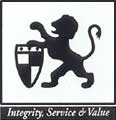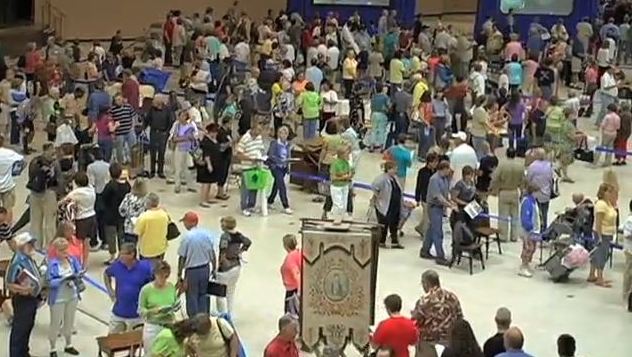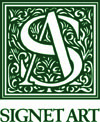Anyone who has ever tuned in to PBS’s Antiques Roadshow has seen that moment …the owner gets the news that the thingy they bought at the local yard sale or inherited from great aunt Marge or rescued from a trash heap is in actuality a fine example of the work of a famous artist and is worth a fortune. The owner stands, mouth agape, speechless, gobsmacked, crying or stammering “You’re kidding? You’re kidding?” Antiques Roadshow started in the late 1970’s in the United Kingdom and came to America in 1997. By then, the formula for success was already well developed… find the unsuspecting owner with something good. Share some interesting information about why their item is collectible. Give a few tidbits of information about a given artist, style, collectible area, etc. Then surprise the owner on camera with the astounding value of their piece and film the reaction. Very occasionally throw in a good example of a fake or forgery and make those teachable moments about what to avoid in a given area of collecting. Film the disappointment on that owner’s face as the expert breaks the bad news. The tension the viewer feels as the experts deliver the news, the shared excitement one feels for the wonder-struck owner of the expensive masterpiece or the pity the viewer feels as the expert publically debunks an owner’s piece has driven the popularity of the show for years. It has also ignited a craze for collecting across America. As the show grew in popularity in America, interest in various areas of collecting grew, awareness and attendance at estate sales, garage sales and the like grew exponentially. Some of the experts on the show became famous and were treated like celebrities. Off-shoot television shows were planned and filmed in an effort to capitalize on the success of this show. Suddenly everyone wanted their own “Roadshow” moment.
As someone who has been an appraiser since the late 1980’s, I can personally report that the number of calls and emails to my office increased dramatically. The quality and subject of the calls and emails also changed. Some of the changes were good. Who could object to a wider interest in the field of collecting? When asked what I do for a living by a stranger at a party, the reply “art appraiser” was now met with a little more interest and a few less blank stares. However, some of the changes were not as fun to deal with. To at least a small segment of the more naïve fans of Antiques Roadshow, the show’s format left two impressions that are the bane of the professional appraiser’s daily life. The first being that appraisers are instantaneous founts of information on any artist, style or collectible area and can talk at length about any artist’s biographical information, price range, etc. from memory---no need for research. I think this one is spawned by the relaxed, seemingly extemporaneous talks the experts give on a piece just as they are about to deliver the value news. Let me be the one to debunk that myth. Yes, the on-camera talent are very knowledgeable. But, before that segment was shot, they also had time to research the item’s recent sales history, to look up and refresh their memory on an artist’s biographical details and often, to confer with other experts in the field. I have been appraising fine and decorative art since 1987. I can certainly wax eloquent on a number of topics in the field and love to talk to an appreciative audience who are interested in the subject matter. But, I do not hesitate for a moment to admit to the caller on the phone that I am not familiar with the name he is mentioning but would be happy to set an appointment for an appraisal. I have encountered and am very familiar with hundreds, possibly thousands of artists in the last 28 years. I have a good visual recall and incredible research skills. If the artist is a major talent, I am likely to know their work. But, I don’t have their biographical information memorized and appraise far too many items in a given week to hold the latest sales data for every artist in my memory. That’s why good appraisers get paid to do the research needed.
And, that leads to the second wrong impression that Roadshow has left with some of its more naïve viewers—that all appraisals are free. It is known by the show’s fans that when they come into your town, you can take a few items, get in line and get a free appraisal. The Roadshow tapes in the summer months and moves from city to city, inviting local audiences to bring their items in. These lines sometimes spill out of the venues and snake around the street. For some collectors, these are opportunities to bring their items, possibly see some of the appraisers they have seen on t.v. and get a free consultation. Some attend with the hope of having their own Roadshow moment, of finding that their item is a hidden treasure. Others stop by the “photo booth” and tape their reaction to their experience in hopes that they will get on the program that way. The lines are long. The on-air talent is spending most of their time culling through the vast numbers of items that show up for those very rare combinations of a good piece and an uninformed owner.
After all, that combination is what drives the popularity of the show. When such combinations are spotted, those appraisers pitch the idea to the show’s producer in hopes of getting the go-ahead to film a segment. These taped segments are the reason the on-air talents are willing to participate. It is good marketing for their paid businesses, be it as an independent appraiser, a representative of an auction house or gallery dealer. They are not paid by the show. They cover their own travel expenses. They are willing to do this because the exposure on the show helps market their businesses. They hope to build their reputation in their field so paying clients will select them over a competitor when the next good job comes up or the next item goes to auction.
In the meantime, several dozen appraisers in various fields who will never appear on camera are taking quick looks at the thousands of items brought in by collectors for that “free appraisal.” This service should more accurately be called a “verbal consultation” and the difference should be made clearer to the participant. For the most part, an owner is directed to a table where an appraiser in a given field takes a quick look at their item, tells the owner what they have and gives a unresearched opinion of value range. With the thousands of items coming in, there is just not time to research each item. And, quite frankly many items, especially those on the low end, do not warrant research. A well-trained appraiser can go through hundreds of $ 30-200 items, price them and move on. They have seen thousands of items in their field and are trained to sort the wheat from the chaff quickly. These consultations occur verbally and are meant as just that, a consultation. There is no written document. The owner does not get an appraisal, a well researched written assessment of the value of an item for a given intended use and within a given marketplace. The owner gets a few moments with a trained appraiser and gets a free opinion of value. That is a valuable commodity for which the owner has exchanged an entire day standing in line. The appraisers, who have spent years studying in their areas and more years honing their skills and attending required appraisal courses are giving their time for free. But, this is not the norm. On a day-to-day basis, appraisers are paid for their time and expertise.
I have been sometimes amused, sometimes befuddled and frankly sometimes a bit irritated with the requests for free appraisal work. I get several emails weekly, each with attached images, stating a version of the following… “I own this thingy. What can you tell me about it. Thanks, George.” My assistant long ago developed a standard email reply that gives our hours of business and invites the emailer to call to discuss appointment times and costs.” We get several similar calls per week. We try to handle them in a kind and professional manner and to point out that appraisal is my profession. I charge by the hour for my services. Some have a lightbulb moment when this is explained. Oddly enough, others are insulted that we would think of charging for appraisals. Ah well… it is what it is.
When people do find out in a social setting that I am an appraiser, the Roadshow moment question is quite often the next topic of discussion. “What have you found that was a big surprise?” That has occasionally happened, of course. But, it is much rarer than fans of the show would like to believe. I have appraised hundreds of items of very high value. But the owners were connoisseurs who knew they had items of value. I have also had many occasions to disappoint folks who thought they got an incredible find at a garage sale or estate sale. The client paid $ 10-50 for an item they thought was an original such-and-so and I have to be the one to say that they paid fairly for the reproduction copy of it.
I am a big fan of passionate collecting. I am also an advocate of building one’s connoisseurship in a field of collecting. If you do want to be the person that makes a great find at a tag sale, it is much more likely to happen if you bring with you a knowledge base for what it collectible in the field. Deep knowledge will trump dumb luck every time. Perhaps, rather than randomly acquiring things and hoping that you happen on a find, the better strategy would be to start studying up buying smart. You might not get selected to appear on television since you will be a knowledgeable collector. But, you will have the satisfaction of collecting and really appreciating the items you own.

Where does one start? Pick a field you like and start attending sales in the area. Start buying books about the collectibles you like. Start trying to better understand why one item in the field is considered more desirable than others. Take some classes that will help you identify items in your field. In that vein, I will mention here a good seminar coming up this summer and give you a link. Whitehall Antiques in Chapel Hill, NC is hosting their 34th annual seminar on antiques and collectibles from July 20th-25th. The very talented and knowledgeable Elizabeth and David Lindquist are speaking on silver July 20-21st. I will be speaking on prints July 22nd and on paintings July 23rd. Then the Linquists spend the next two days on wood identification. You can sign up for these topics individually or take the whole week of classes. These classes are very hands-on and focused on teaching both the basics and advanced skills of identification. Whether you are a novice or a professional, you will get a lot of good information from taking the courses. Here’s the link to their homepage, Whitehall Antiques, and here is a link with information about the 34th Annual Summer Seminar Series on Antiques, aka: Antiques Camp.
I can tell you that I do not teach all that often. When I do, I bring lots of examples so that everyone in the class will have a chance to personally inspect and understand the subject. Plus, this is a lovely area for a vacation. Come join us this summer and learn more about these fields of collecting.


